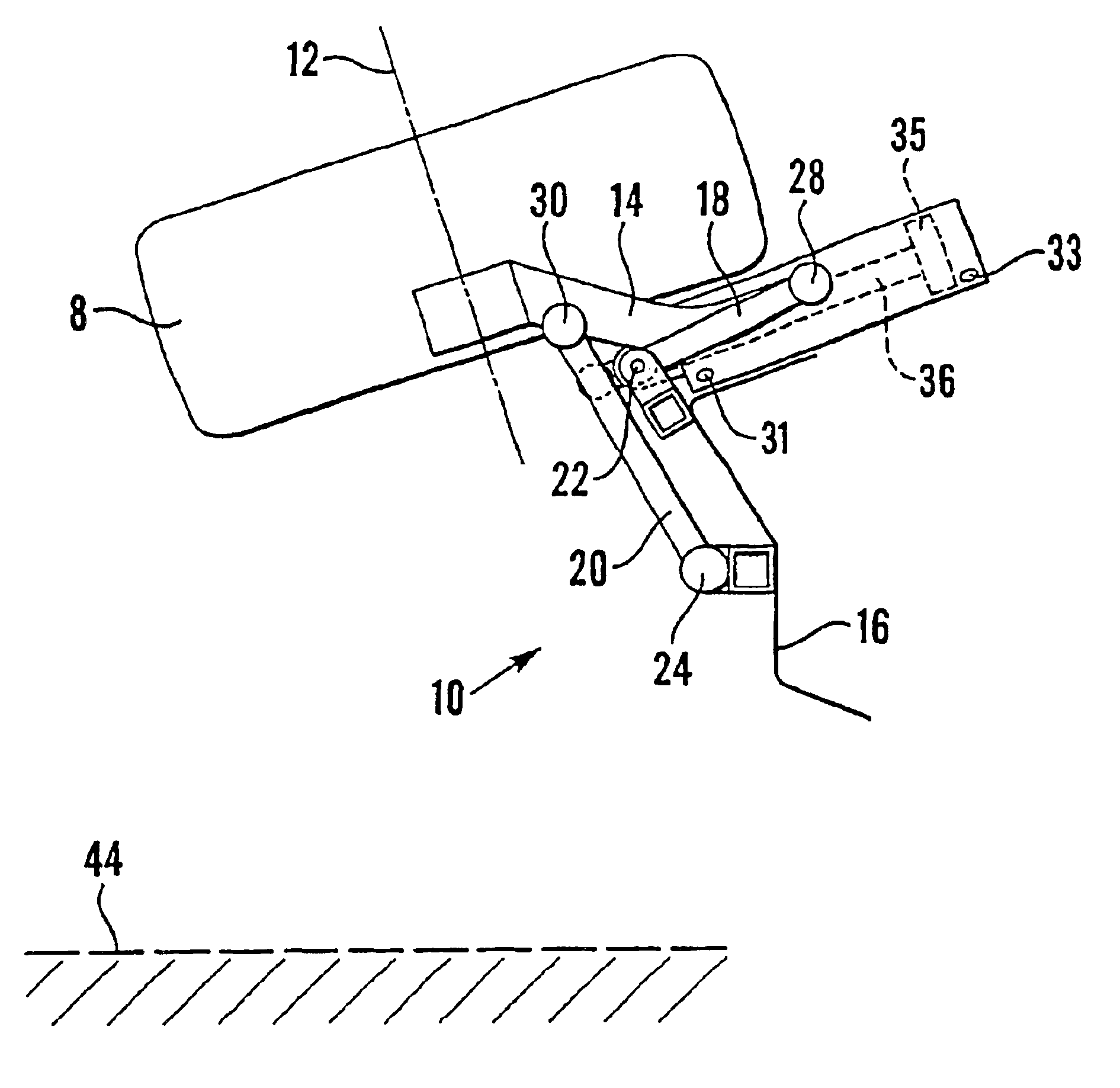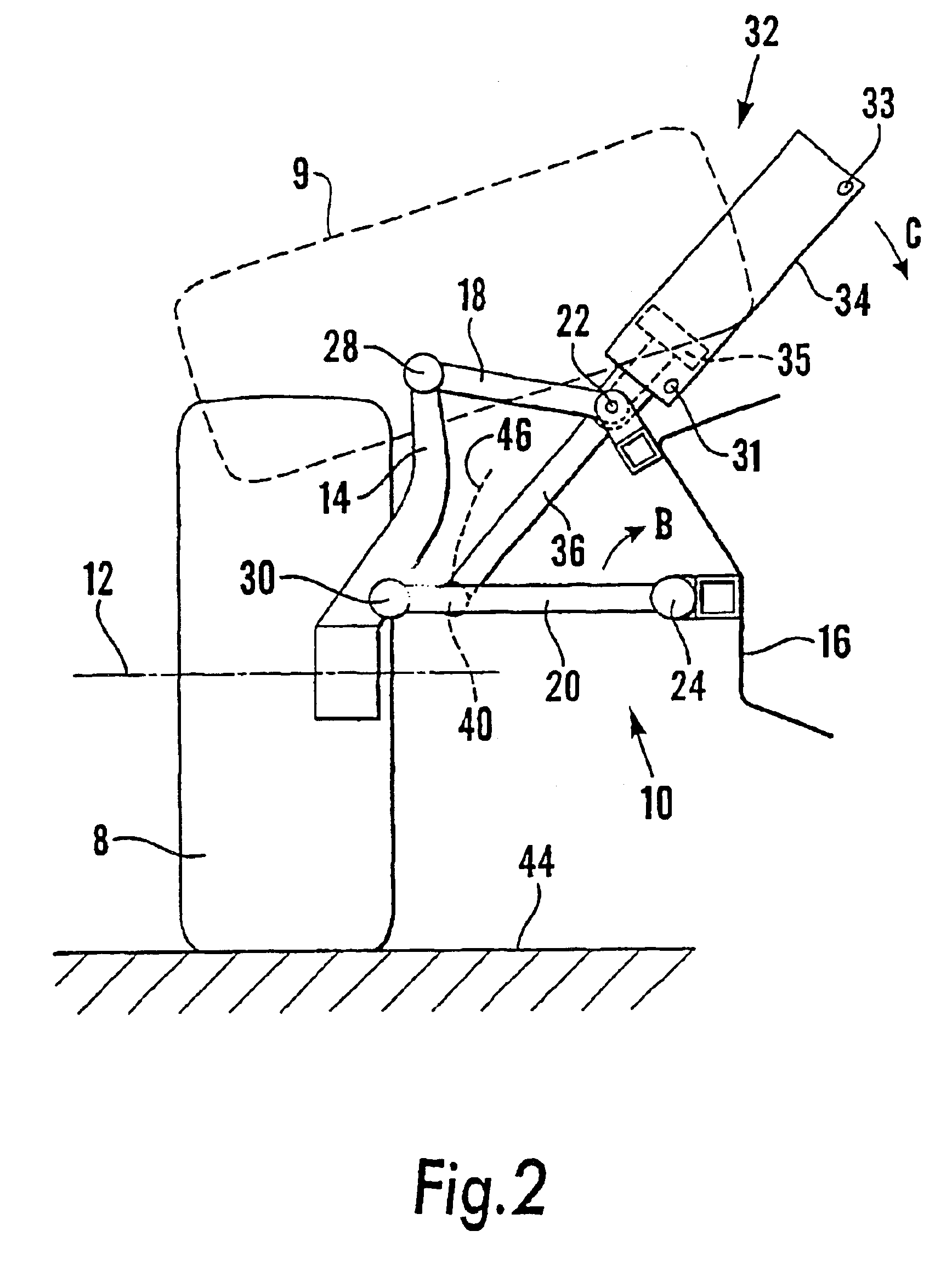Suspension arrangement
a suspension arrangement and vehicle technology, applied in the direction of resilient suspensions, vehicle springs, propulsive elements, etc., can solve the problems of limiting both on-road ground clearance, negligible camber change as the suspension operates, and not allowing sufficient movement of the suspension strut or hydraulic cylinder
- Summary
- Abstract
- Description
- Claims
- Application Information
AI Technical Summary
Benefits of technology
Problems solved by technology
Method used
Image
Examples
Embodiment Construction
[0019]Referring firstly to FIGS. 1 and 2, a suspension arrangement for an amphibious vehicle wheel 8 is indicated generally at 10. The wheel 8 is mounted for rotation about an axis 12 on an axle (not shown), which is conventionally mounted to a wheel support upright 14. An upper control arm 18 and a lower control arm 20 support the wheel support upright 14 from the vehicle body 16. The control arms 18,20 are aligned with and spaced from each other and are pivotally mounted to the vehicle body 16 about respective parallel axes 22,24. This is commonly known as a double wishbone suspension arrangement.
[0020]Respective ball-joints 28,30 connect the control arms 18,20 to the wheel support upright 14. The ball joints allow turning movement of the wheel support upright 14, and-hence the wheel 8, in a lateral plane enabling steering in driving mode, as indicated by arrow A. The ball joints 28,30 also allow the control arms 18,20 to move together in parallelogram like manner during normal ro...
PUM
 Login to View More
Login to View More Abstract
Description
Claims
Application Information
 Login to View More
Login to View More - R&D
- Intellectual Property
- Life Sciences
- Materials
- Tech Scout
- Unparalleled Data Quality
- Higher Quality Content
- 60% Fewer Hallucinations
Browse by: Latest US Patents, China's latest patents, Technical Efficacy Thesaurus, Application Domain, Technology Topic, Popular Technical Reports.
© 2025 PatSnap. All rights reserved.Legal|Privacy policy|Modern Slavery Act Transparency Statement|Sitemap|About US| Contact US: help@patsnap.com



